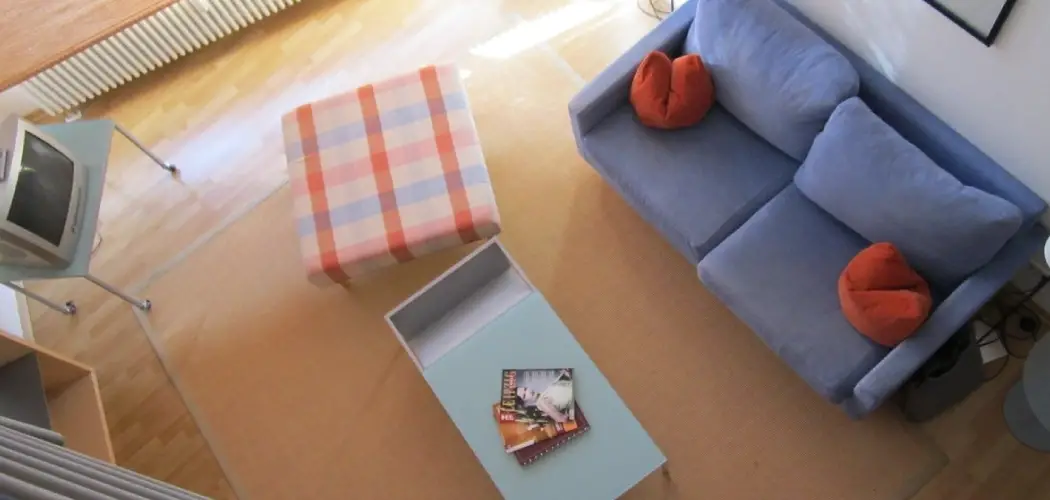Do you need help fitting a sectional sofa into your small living space? Arranging furniture in a limited area can be challenging, but with some creativity and planning, you can make it work.
How to arrange a sectional sofa in a small room can be a challenging yet rewarding task. The key to maximizing both space and comfort lies in strategic planning and creative thinking. Whether you want to create an intimate conversational area or offer ample seating for guests, a sectional sofa can be a versatile centerpiece. With careful consideration of layout, proportion, and functionality, you can transform a compact space into a cozy and stylish retreat.
This guide will provide you with practical tips and insightful suggestions to effectively arrange your sectional sofa, ensuring it enhances the aesthetic and utility of your small room.
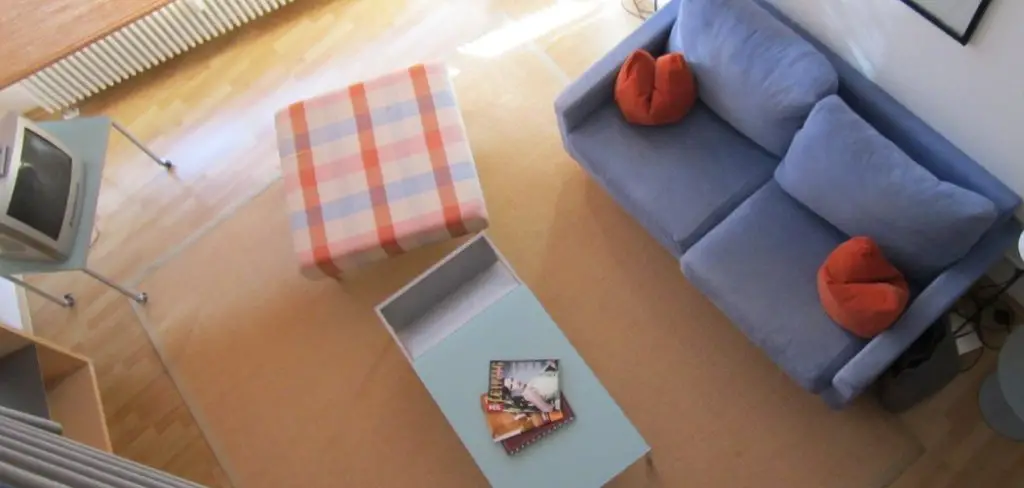
What Will You Need?
Before you begin arranging your sectional sofa, you must take stock of what you have and may need. Here are some items that will come in handy during the process:
- Measuring Tape: This tool will be your best friend as you determine your room’s and furniture’s dimensions.
- Floor Plan: Creating a rough sketch or using an online floor planning tool can help visualize different layout options.
- Furniture Sliders: These small discs placed under the legs of heavy furniture make it easier to move them around without damaging floors.
- Accessories and Decor: To add personality and style to your space, consider incorporating throw pillows, blankets, rugs, and other decorative elements.
Once you have these items ready, it’s time to start arranging your sectional sofa!
10 Easy Steps on How to Arrange a Sectional Sofa in a Small Room
Step 1. Measure Your Space:
Before placing your sectional sofa, taking accurate room measurements is crucial. Begin by measuring the length and width of the room, and note down any architectural features like windows, doors, and built-in items (such as a fireplace or bookshelves) that could impact where your sofa might fit. Don’t forget to measure the dimensions of the sectional sofa itself. Knowing these measurements helps you understand how the sofa will interact with the space, allowing you to identify potential areas where it can be placed without obstructing pathways or essential features.
Additionally, consider the traffic flow and how people typically move through the room to ensure the arrangement remains functional and doesn’t hinder movement.
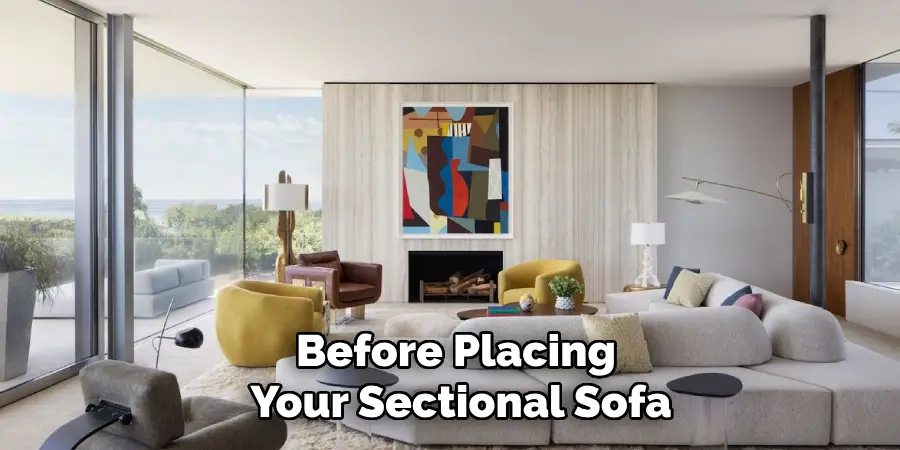
Step 2. Choose a Focal Point:
After measuring your space, the next important step is to select a focal point within the room. A focal point acts as the primary visual element that naturally draws attention, around which the rest of the room’s layout can be centered. Common focal points include a fireplace, a large window with a view, or a television. By aligning your sectional sofa with the chosen focal point, you enhance the room’s visual harmony and create an inviting atmosphere.
Consider the orientation of the couch about the focal point to facilitate comfortable viewing or engagement. This arrangement not only maximizes the room’s aesthetic appeal but also ensures that the sectional supports its primary function, whether it’s entertainment, conversation, or relaxation.
Step 3. Determine the Configuration:
Once you’ve identified the focal point, the next step is determining the best configuration for your sectional sofa. Sectionals come in various shapes, such as L-shaped, U-shaped, or modular designs with detachable sections. Assess the available space and consider the sectional’s shape to decide how it will fit into the room. For smaller rooms, an L-shaped sectional is often a practical choice as it can easily be placed against walls and in corners, thus saving space.
Modular sectionals offer flexibility, allowing you to experiment with different arrangements and adapt to your room’s unique layout.
Step 4. Optimize the Placement:
After determining the configuration, focus on optimizing the sectional sofa placement to maximize your available space. Start by positioning the sectional along one of the room’s longer walls, if possible, to open up the central area, creating a more spacious feel. This approach is efficient in narrow or rectangular rooms. Alternatively, you can place the sectional in a corner to capitalize on the room’s footprint without encroaching on walking paths. If the room permits, slightly angling the sectional can add a dynamic touch and draw attention to the sofa as the centerpiece.
Consider how the sectional can interact with other furniture pieces, such as coffee tables or side tables, ensuring adequate space to move around and access these elements easily.
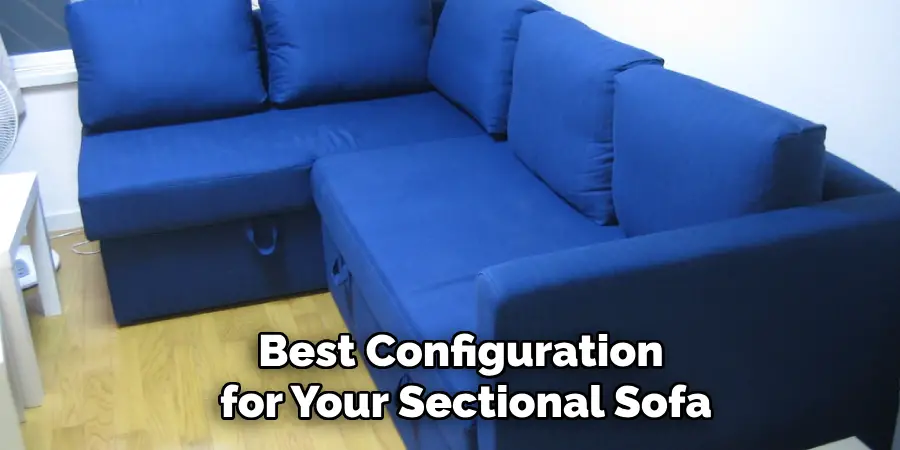
Step 5. Balance with Additional Seating:
To enhance the versatility and functionality of your room, consider integrating additional seating options alongside your sectional sofa. Depending on the space available, incorporating one or two accent chairs, a loveseat, or even floor cushions can provide extra seating for guests without overcrowding the area. Ensure these additional seats complement your sectional’s style and color scheme to maintain a cohesive look. Arrange them in a way that encourages conversation and interaction by placing an accent chair at an angle facing the sectional.
Balancing seating options offers flexibility for social gatherings and adds an element of design depth, making your room feel inviting and well-curated.
Step 6. Incorporate Functional Furniture:
In a small room, every piece of furniture should serve a purpose. Consider incorporating functional furniture that complement your sectional sofa and enhance the room’s utility. For instance, a coffee table with storage options or nesting tables that can be easily moved around can add convenience without contributing to clutter. An ottoman, which can double as additional seating or a footrest, is an effective way to maximize the use of space. Choose pieces that align with your room’s aesthetic, and ensure they do not obstruct movement between seating areas.
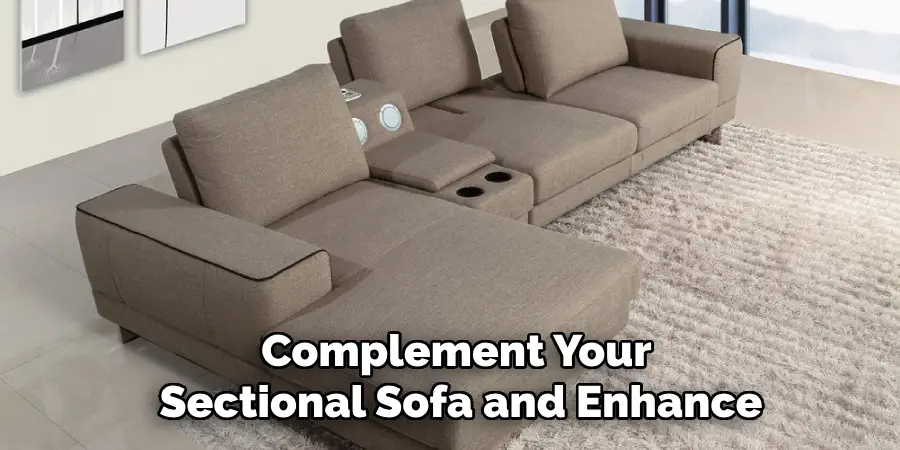
Step 7. Add Accents and Decorations:
With the functional aspects of your room in place, it’s time to add accents and decorations to personalize and enhance the aesthetic appeal of your space. Start by selecting a color palette that complements your sectional sofa and surrounding furniture. Introduce cushions and throws in various textures to add warmth and comfort. Hanging artwork or photographs on the walls can create focal points and express your style.
Additionally, incorporating plants or vases with fresh flowers can bring a touch of nature indoors, improving the ambiance and air quality.
Step 8. Illuminate the Space:
Lighting plays a crucial role in defining the mood and functionality of your living space. Begin by incorporating a mix of lighting types that can be adjusted according to the desired ambiance. Consider overhead lighting to provide general illumination and supplement it with floor or table lamps for task-specific lighting zones, such as reading corners or work areas. A dimmer switch can offer flexibility, allowing you to modify the light intensity to suit different times of the day or events.
Choosing fixtures that align with your room’s style and color scheme will ensure cohesion. Additionally, using mirrors strategically can help amplify natural light, making the space appear larger and more inviting.
Step 9. Ensure Efficient Organization:
To maintain an orderly and clutter-free living space, efficient organization is essential. Begin by incorporating storage solutions that blend seamlessly with your room’s decor. Utilize built-in shelves or bookcases to store books, decorative items, or electronics in an accessible yet tidy manner. Consider multifunctional furniture, such as storage ottomans or coffee tables with drawers, to hide away remote controls, magazines, or other small items that might otherwise crowd surfaces.
Install hooks or racks for hanging coats or bags near entryways, contributing to an organized appearance. Proper organization not only helps keep your room aesthetically pleasing but also ensures that it remains a welcoming and functional space for everyday activities and social gatherings.
Step 10. Personalize the Atmosphere:
Personalizing the atmosphere of your living space allows it to truly reflect who you are and make it feel like home. Start by incorporating personal mementos that tell your story, such as travel souvenirs, family heirlooms, or sentimental items. Tailor the scent of your room by using candles, diffusers, or fresh flowers that evoke memories or simply provide a calming effect. Music can also set the tone, so consider integrating speakers or a sound system that can play your favorite playlists.
Each element you add should resonate with your personality, creating a unique environment visitors will immediately identify as yours. Personal touches enhance the aesthetic and enrich the space’s soul, making it a cozy retreat from the outside world.
By following these steps, you can create a well-balanced and aesthetically pleasing living space that revolves around your sectional sofa.
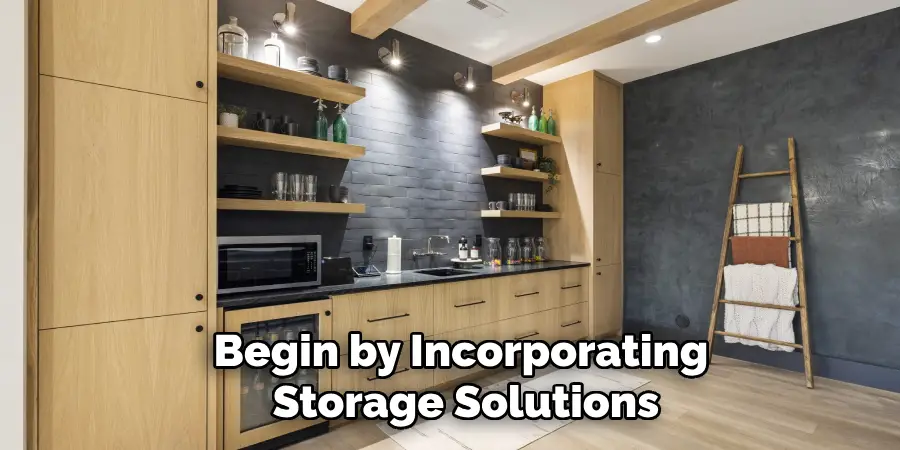
Conclusion
How to arrange a sectional sofa in a small room can seem like a daunting task, but with careful planning and consideration, it is possible to create a functional and visually appealing living space.
By balancing seating options, incorporating functional furniture, adding accents and decorations, illuminating the space, ensuring efficient organization, and personalizing the atmosphere, you can make the most of your small room without compromising comfort or style. Remember to leave enough room for movement between furniture pieces while maintaining a cohesive aesthetic.
With these tips, you can transform your small living space into a cozy and inviting haven that centers around your sectional sofa. So go ahead and enjoy your comfortable and well-designed living area!
About
Angela is the chief editor of Indoorense. She began her career as an interior designer before applying her strategic and creative passion to lifestyle and home.
She has close to 15 years of experience in creative writing and online content strategy for housekeeping and cleaning,home decorations as well as other efforts.
She loves her job and has the privilege of working with an extraordinary team. She lives with her husband, two sons, and daughter in Petersburg. When she’s not busy working she spent time with her family.

